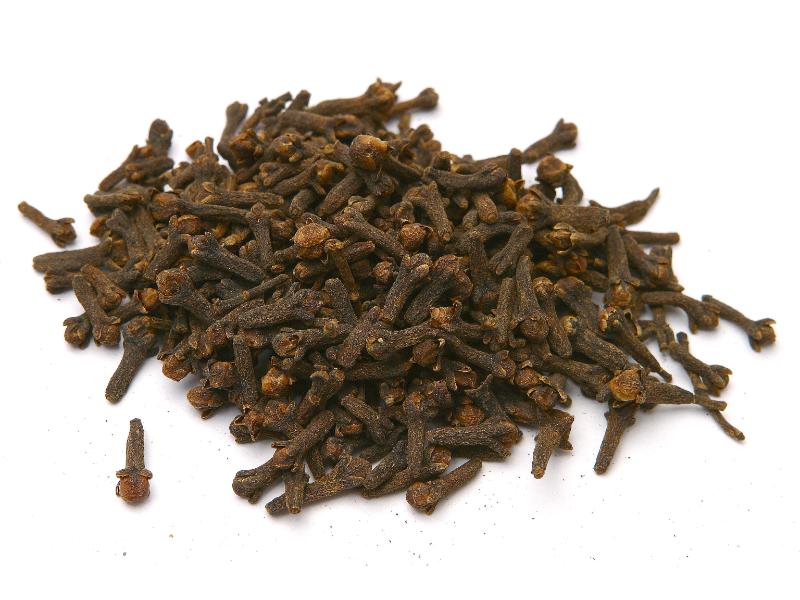Search in medicinals
Caryophylli Flos
Clove
丁香 〔丁香〕 dīng xiāng

Alternate Chinese names: 雄丁香 xióng dīng xiāng; 支解香 zhī jiě xiāng; 丁子 dīng zǐ; 丁子香 dīng zǐ xiāng; 公丁香 gōng dīng xiāng
Kingdom: Plant
Origin in PRC Pharmacopoeia: Eugenia caryophyllata Thunb. (PRC Pharmacopoeia)
Origin in unofficial sources: Eugenia caryophyllata Thunb.*; Syzygium aromaticum (L.) Merr. et Perry [= Eugenia caryophyllata Thunb.]
Use: Medicinal and alimentary
Category: Interior-warming agents
Properties: Acrid; warm.
Channel entry: Stomach, spleen, and kidney channels.
Actions and indications:
- Warms the center and downbears counterflow: Vomiting and hiccup due to stomach cold.
- Disperses cold and relieves pain: Stomach cold with cold pain in the stomach duct and abdomen.
- Warms the kidney and assists yáng: Uterine cold or impotence, due to kidney vacuity.
- Additional uses: Dīng xiāng may be prepared as a medicinal liquor or as a decoction for external application to treat lichen patterns. Nowadays, the essential oil is extracted as a topical pain-relieving preparation for toothache.
Dosage and method: Oral: 1.5–6 g in decoctions; also used externally.
Warnings: Dīng xiāng fears the medicinal yù jīn (Curcumae Radix); it is contraindicated in heat patterns, including
Product description: This is a short club-shaped bud, about 1.5–2 cm long, and reddish-brown in color. The lower part is a slightly squared cylindrical calyx about 1–1.3 cm long, 5 mm wide, and 3 mm thick, that tapers at the base and exudes oil when scratched. At the top of the calyx are four fat sepals, each 3 mm long. The upper part is a sphere roughly 6 mm in diameter, comprising four petals folded around each other. The bud cuts open to reveal numerous stamens curled toward the center, in which there is a thick straight style. It is oily in substance.
Quality: Best are large dry unopened buds that have no stalk, are oily in substance, and sink in water.
Production area: Guǎngdōng, Indonesia, Malaysia (Penang), the Moluccas, Zanzibar, and Madagascar.
Etymology: Dīng xiāng 丁香, literally nail aroma
or aromatic nail,
describes the shape and scent of this item. The English name clove comes from the Latin clavus, which also means nail.